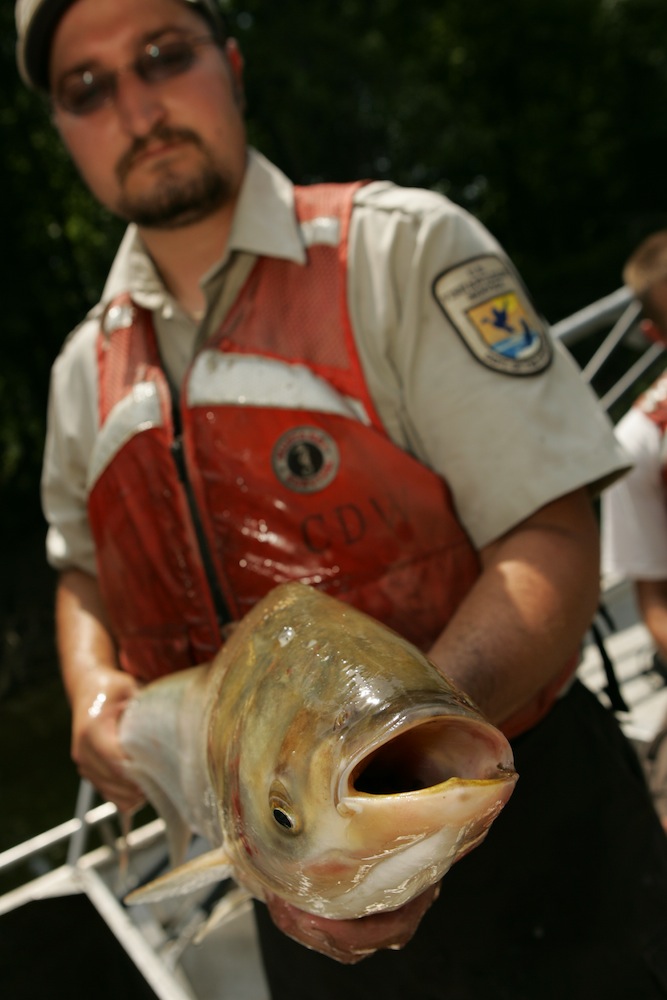Invasive Asian Carp Breeding in Great Lakes Watershed, Scientists Confirm


Scientists confirmed for the first time this week that at least one type of Asian carp has successfully reproduced in the Great Lakes watershed, a development that could spell trouble for the region's native fish and plankton that fall prey to these invasive carp species.
Researchers at the U.S. Geological Survey (USGS) and Bowling Green State University in Ohio studied four grass carp taken from the Sandusky River, a tributary to Lake Erie in north-central Ohio, and found that they were the result of natural breeding, reported the Associated Press.
Several species of imported Asian carp escaped into the wild decades ago, and have since spread into rivers and lakes across the country. In the Great Lakes watershed, bighead and silver carp voraciously feed on plankton, which could threaten the aquatic food chain and destabilize the fishing industry, according to the AP.
"It's bad news," Duane Chapman, a fisheries biologist at the USGS, told the AP. "It would have been a lot easier to control these fish if they'd been limited in the number of places where they could spawn. This makes our job harder. It doesn't make it impossible, but it makes it harder."
Follow Denise Chow on Twitter @denisechow. Follow LiveScience @livescience, Facebook & Google+.
Get the world’s most fascinating discoveries delivered straight to your inbox.

Denise Chow was the assistant managing editor at Live Science before moving to NBC News as a science reporter, where she focuses on general science and climate change. Before joining the Live Science team in 2013, she spent two years as a staff writer for Space.com, writing about rocket launches and covering NASA's final three space shuttle missions. A Canadian transplant, Denise has a bachelor's degree from the University of Toronto, and a master's degree in journalism from New York University.


